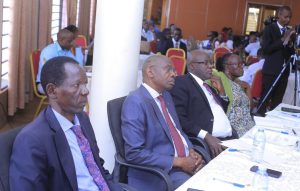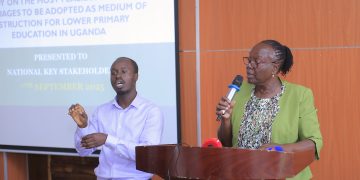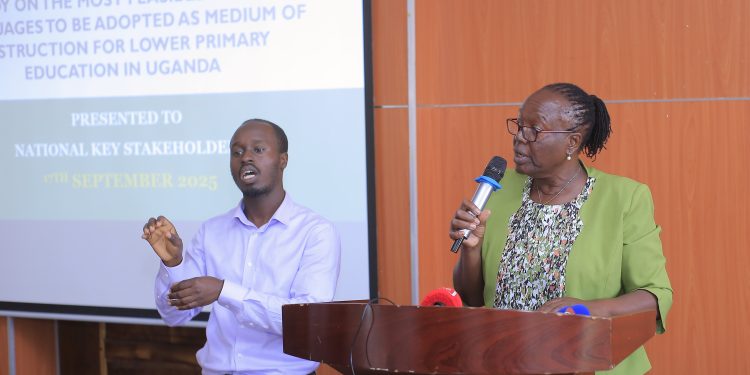A lack of adequate learning materials in local languages continues to undermine early literacy and education outcomes in Uganda, a new report presented to national stakeholders has revealed.
The report, Study on the Most Feasible Familiar Languages to be Adopted as Medium of Instruction for Lower Primary Education in Uganda, calls for urgent reforms to improve bilingual instruction, strengthen teacher training, and scale up the production of curriculum-aligned learning materials in indigenous languages.
Speaking at a validation workshop held at Esella Country Hotel in Kira on September 17, 2025, Dr Grace K. Baguma, Executive Director of the National Curriculum Development Centre (NCDC), said the lack of structured, curriculum-based materials in familiar languages has hindered the full implementation of the thematic curriculum since its rollout in 2007.
“While some reading materials and storybooks have been produced, they remain insufficient for effective lesson planning, teacher training, and literacy development at the lower primary level,” Dr Baguma said. “We need well-structured, curriculum-aligned materials in multiple languages to support teachers, improve literacy outcomes, and ensure a smoother transition to English in upper primary.”
Bilingual Instruction as the Foundation
The report recommends formalising bilingual instruction in early grades by mandating the use of local languages as the medium of instruction (MoI) from Primary 1 (P1) to Primary 3 (P3), with English introduced gradually as a subject. A structured transition model would then be applied, with both English and local languages used in Primary 4 (P4) before full transition to English in Primary 5 (P5).
This phased approach, according to the study, will address the abrupt shift to English in P4, which has negatively affected learning outcomes.
“Many pupils fail to cope when the MoI changes suddenly in P4,” noted Dr Richard Irumba, NCDC’s Deputy Director for Research, Consultancy, and Library Services. “A gradual, bilingual approach ensures children first build strong literacy skills in a language they understand before moving to English.”

Dr Irumba further explained that many of the 26 local languages recommended for instruction are not yet well-documented, lacking orthographies, bilingual dictionaries, grammar books, and storybooks—resources essential for producing quality learning materials.
The suggested languages are; Ateso, Dhopadhola, Kumam, Kupsabiny, Lugisu, Lugwere, Lunyole, Lusamia, Pokot and Lusoga (Eastern Region); Acholi, Lugbarati, Kakwa, Alur, Madi, Gimara and Leb Lango (Northern Region); Lugungu, Lukonzo, Lubwisi, Rutumbira, Runyankore-Rukiga, Runyoro-Rutoro (Western Region); Luganda, Ruruuli (Central Region); Kiswahili (in multilingual areas like Kiryandongo, Obongi and Ssembabule).
“Over the past year, we have supported language boards and local writers to develop 36 manuscripts in local languages. But with 65 constitutionally recognized languages, the task remains daunting,” he admitted.
Kiswahili for Multilingual Areas
In multilingual districts where no single local language dominates, the report proposes Kiswahili as an alternative MoI. This would require developing Kiswahili instructional materials and training teachers in its use to ensure inclusivity and national cohesion.
Tackling Dropout Rates and Building Public Support
The report highlights language barriers as a key driver of high dropout rates in rural areas. It calls for remedial and peer language support programs to help learners struggling with the transition to English.
It also urges the NCDC to lead community sensitization campaigns to address parental skepticism. Many parents still perceive English as the “language of success” and fear local language instruction will disadvantage their children.
“Public awareness is critical. Parents need to understand that learning in a familiar language builds cognitive skills and leads to better long-term outcomes,” the report notes.
Partnerships and Teacher Training
To implement the recommendations, the report calls for partnerships with publishers to produce high-quality, culturally relevant learning materials and continuous teacher training in bilingual instruction methods.
Finally, it recommends field validation pilots to test the feasibility of the proposed language models and ensure resources for teacher training and material production are in place before nationwide rollout.








